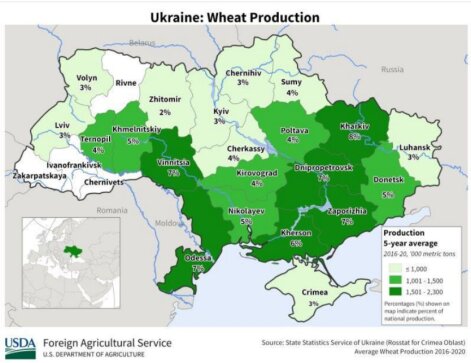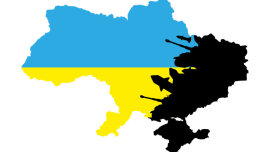Analyst Carlos Mera from Rabobank (London) wrote an interesting report on the impact of the Russian invasion of Ukraine on the global food market. According to his calculations, the blow will entail the most serious consequences for the world economy.
In the event of an invasion and an extreme retaliatory total embargo on Russia and occupied Ukraine, the international market will be deprived of the largest and third largest exporter of wheat in the world (not counting the EU as a bloc). In a relatively short time, a huge amount of wheat can be removed from the international market.
Russia exports 35 million tons, and Ukraine 24 million tons this season. Together, 59 Mt is equivalent to a whopping 29% of world exports.
The price impact of withdrawing this amount of wheat would be extreme, especially since the demand for human consumption of wheat is highly inelastic. Wheat prices rose by 21% in 2021, mainly based on the 2021/22 deficit seen in the market, which the USDA estimates at 8.8 million tons.
Now imagine the price impact of removing from the international market more than 6 times greater. In this extreme case, wheat prices could easily double, causing a scramble to secure supplies, especially in Turkey, the Middle East and North Africa, the biggest importers of Black Sea wheat.
How will this change the face of the wheat trade? Available stocks of wheat outside of Russia will be sold like hot pancakes. It is important to remember here that the US and the EU have been depleting over the past few years and will not be able to supply much additional wheat in the short term.
Other exporters will only have peanuts in comparison. One can only guess what China, with an estimated USDA stockpile of over 140 million tons, could do in such a situation. Some of the wheat in stock may be used for human consumption, but the proportion is not known.
In addition, countries potentially looking to circumvent US sanctions may increase their purchases slightly in light of the incredibly cheap wheat in Russia and Ukraine, but this will only be a fraction of the volume normally exported. The surge in prices outside of Russia will lead to huge pressure on the expansion of the area in the future. However, I am struggling to see a shift significant enough to fully offset losses in the next couple of years, leading to a structural deficit for the foreseeable future.
Of course, Russia may not be able to invade the whole country, but wheat production in Ukraine is shifted towards the south and east.

Wheat production in Ukraine by regions
About 45% of Ukrainian wheat is produced east of the Dnieper River, which forms a strong natural barrier to Russian invasion, with Kyiv as its capital on the west bank. Approximately another 23.5% is grown between the Dnieper and the Southern Bug (the second largest river after the Dnieper in Ukraine). In addition, Russia could invade or at least block ports in the Black Sea, meaning that wheat exports would be severely disrupted.
In short, the impact of the embargo on Russian wheat will be so great that any sanctions are likely to make it possible to make an exception for wheat exports.

























